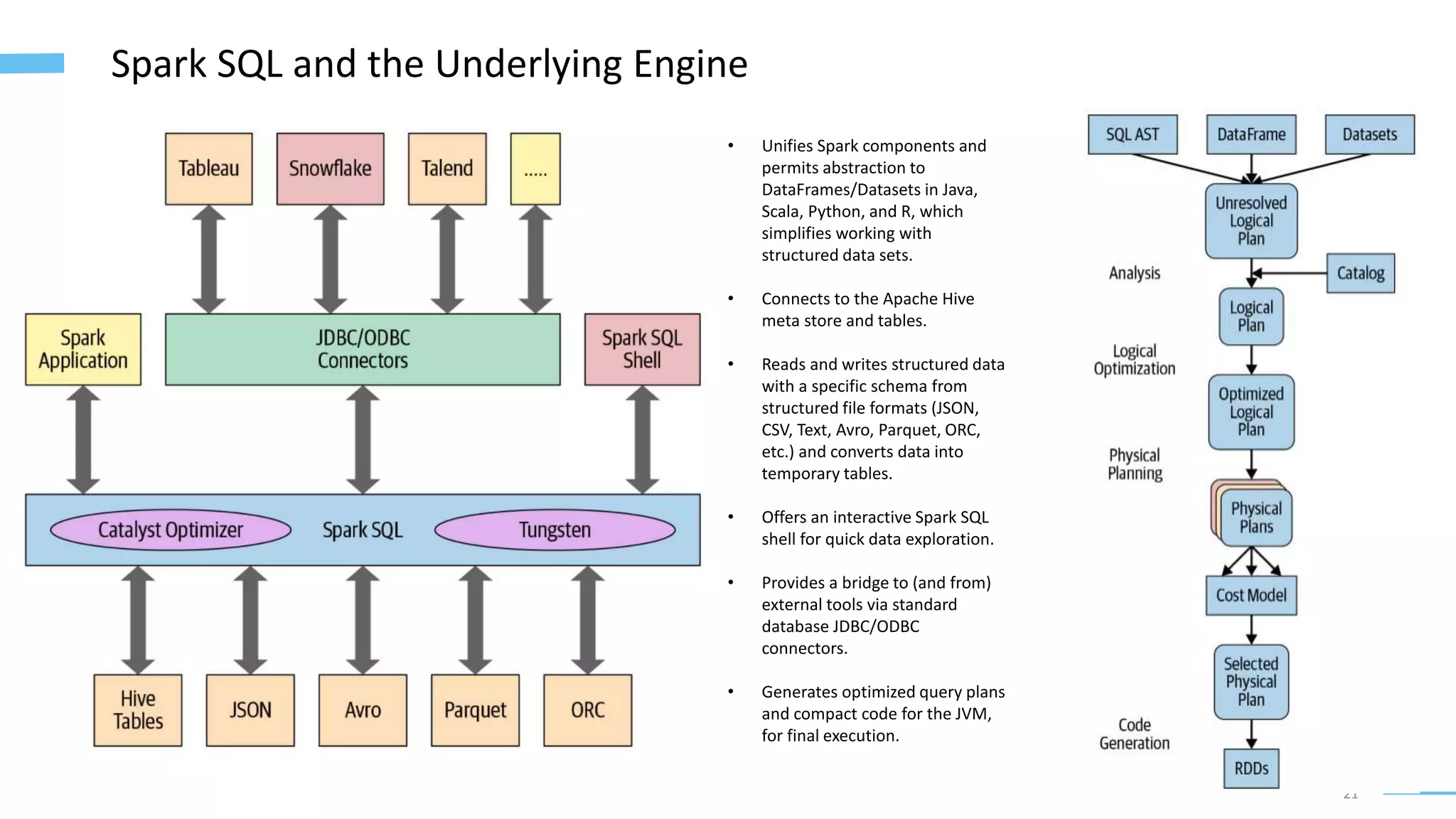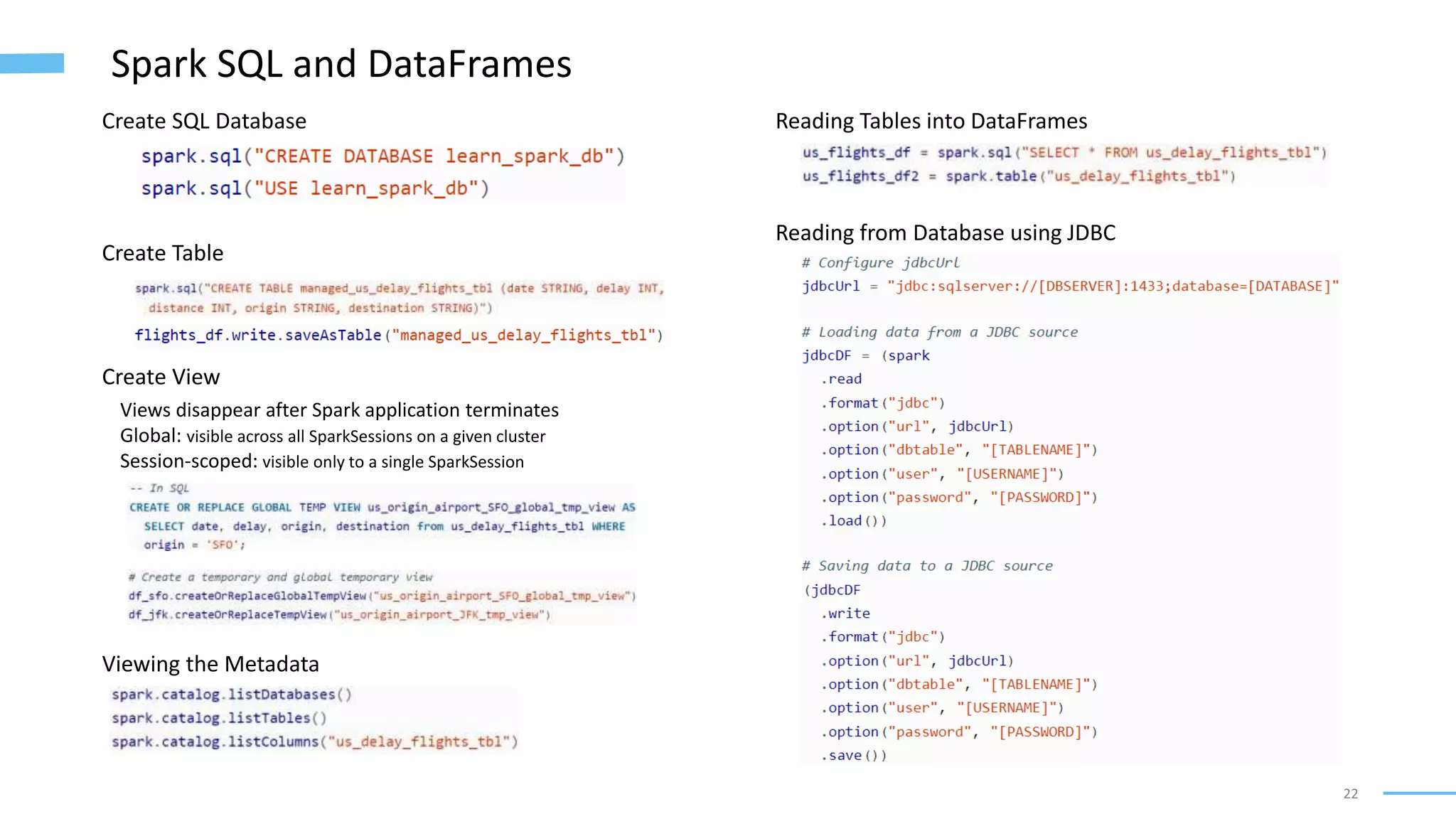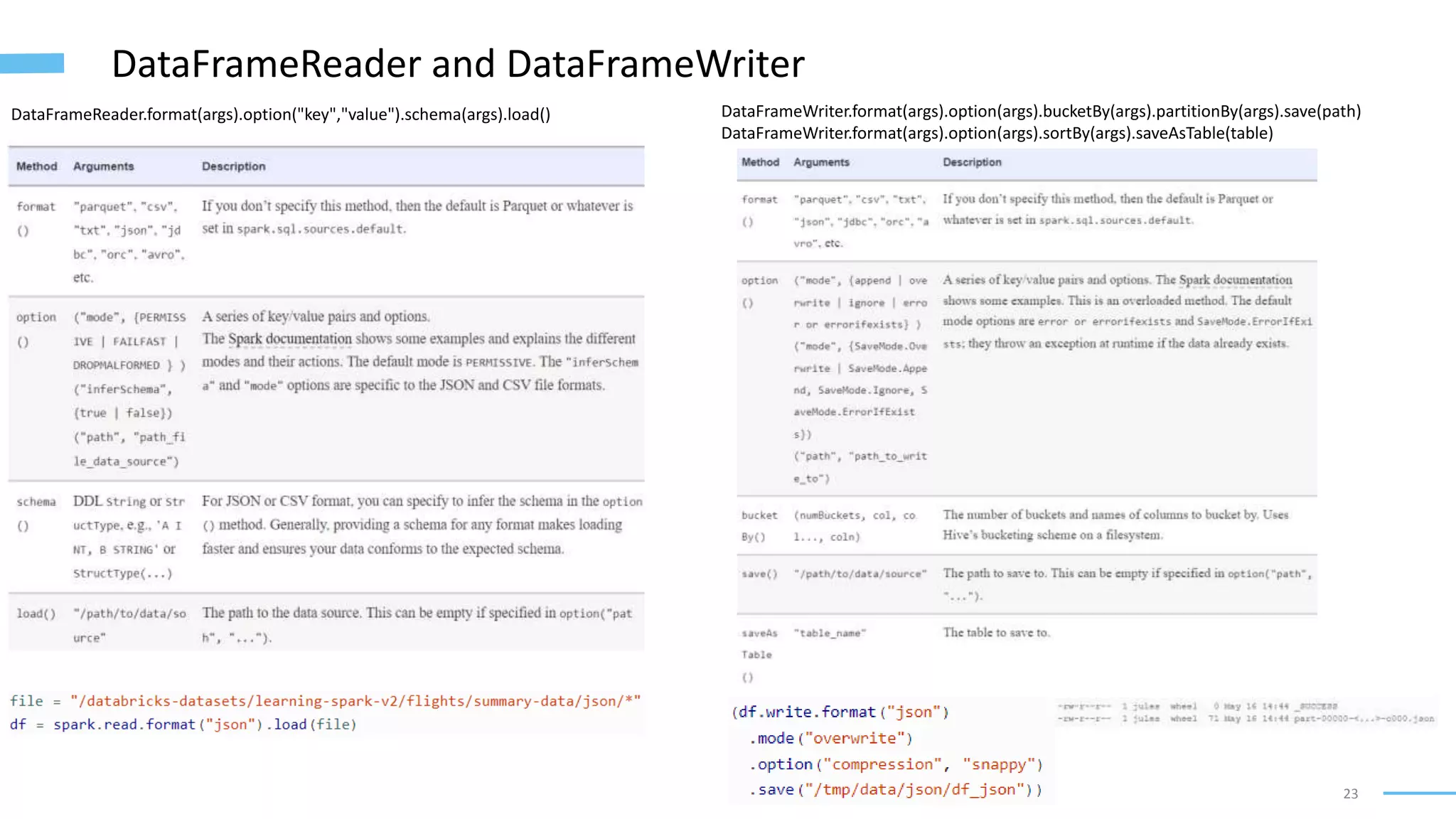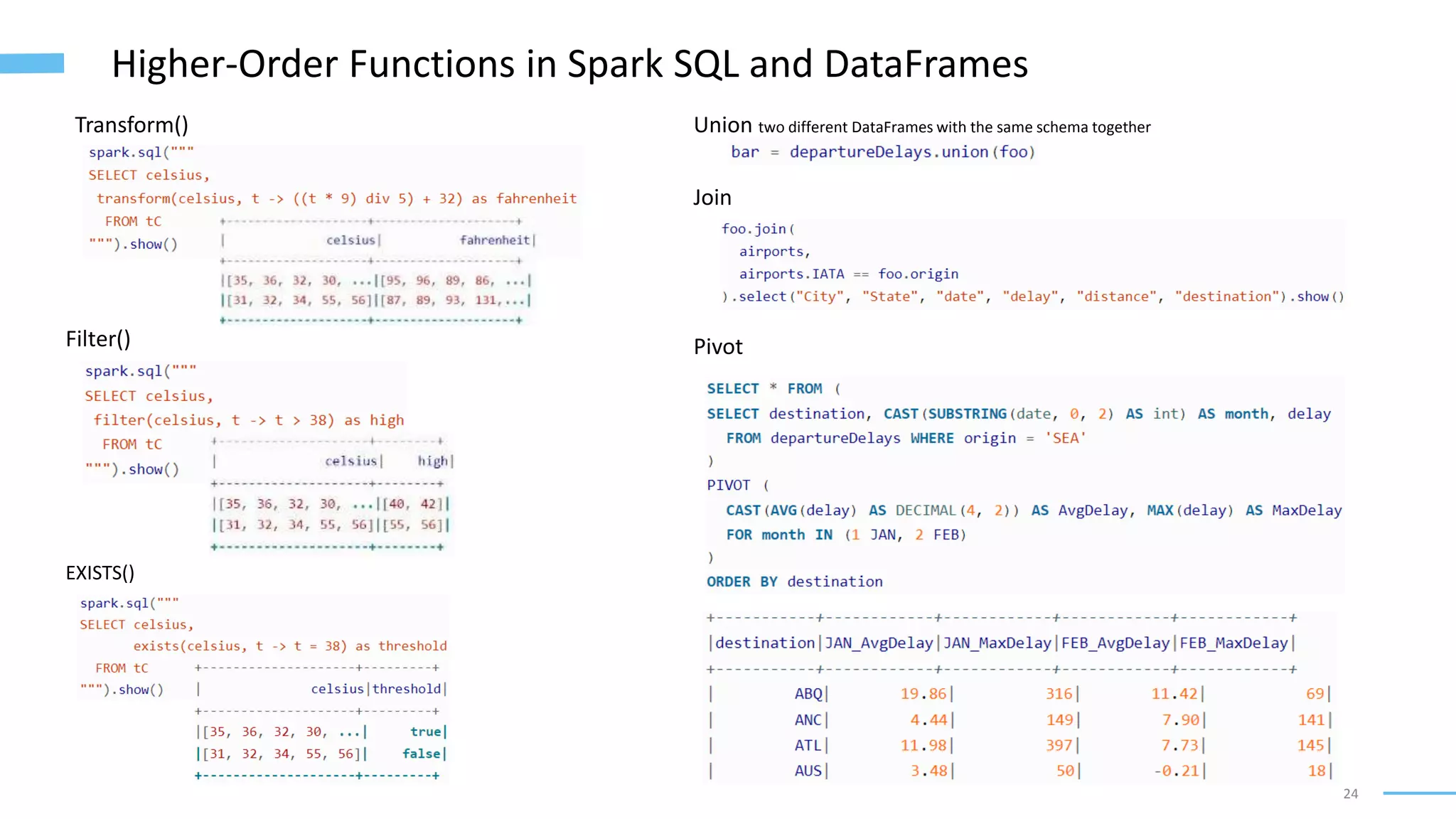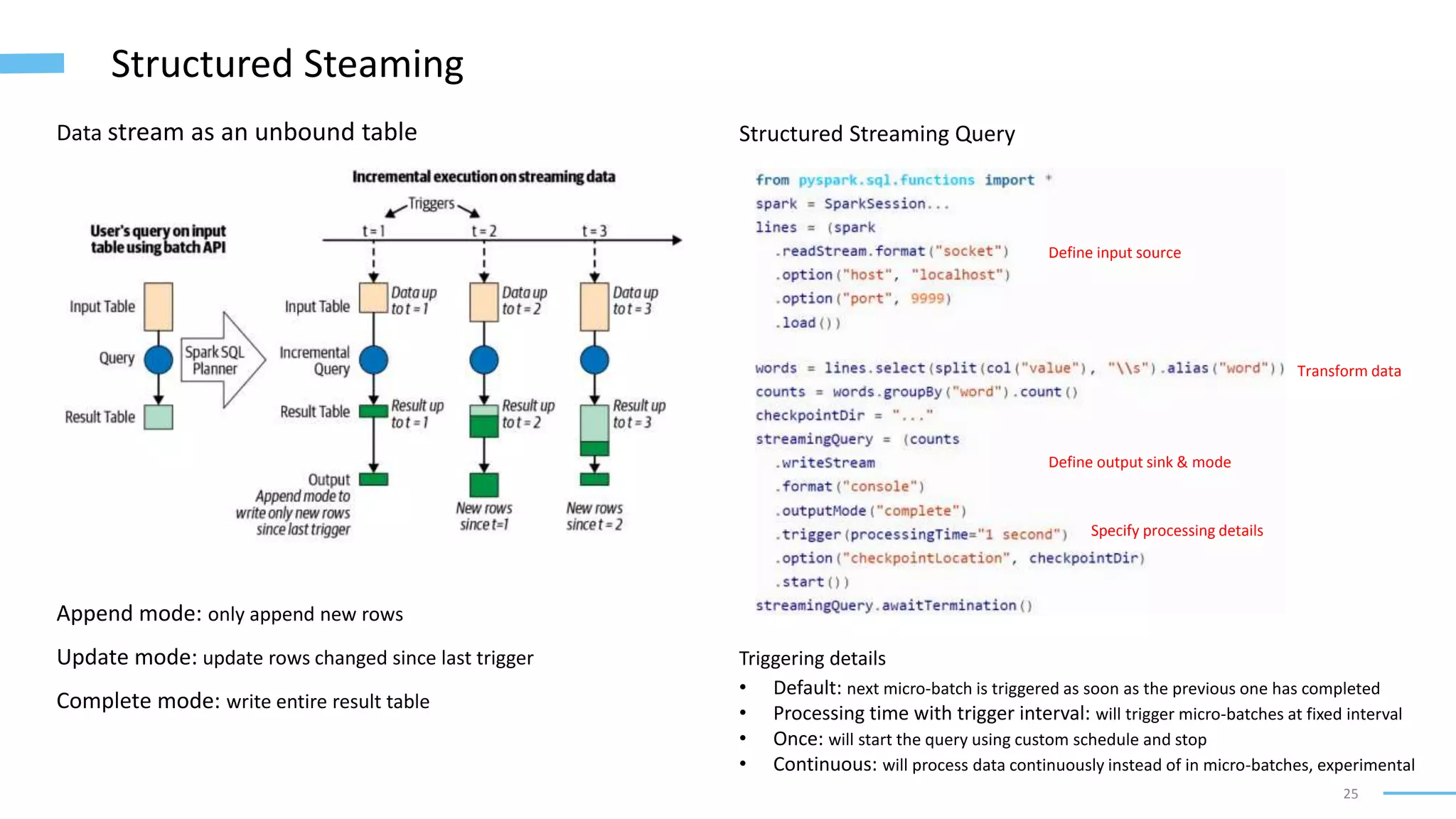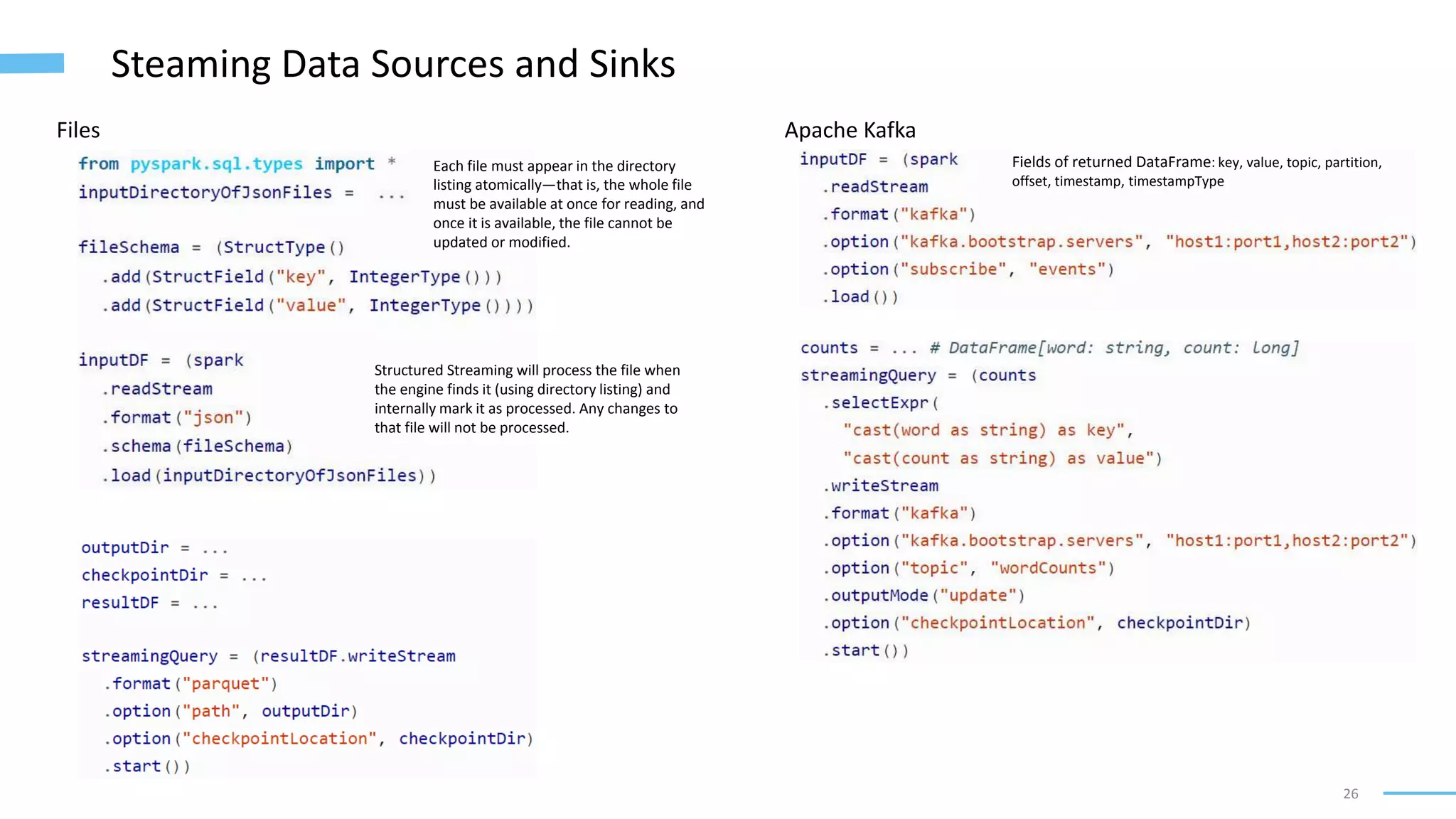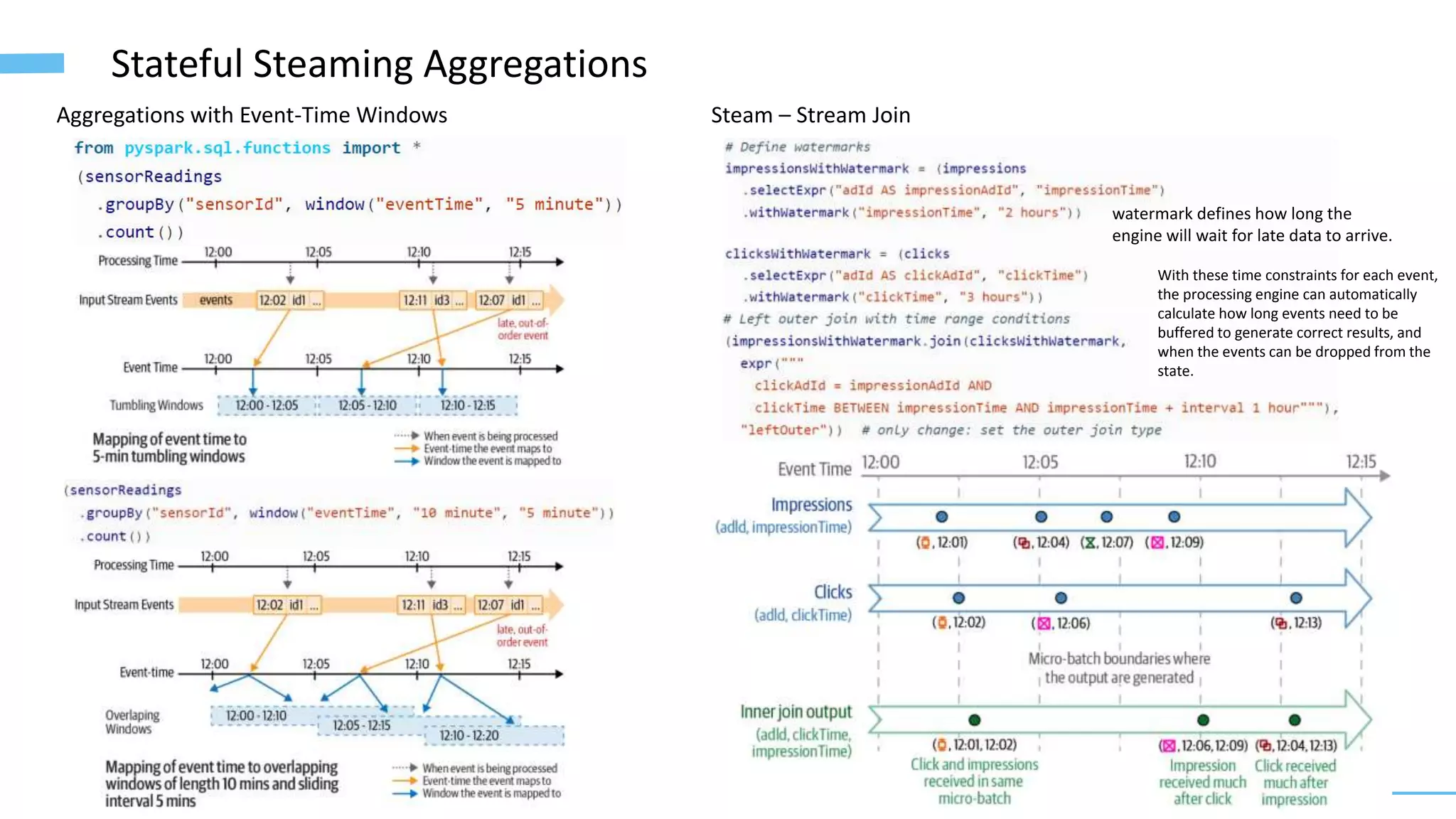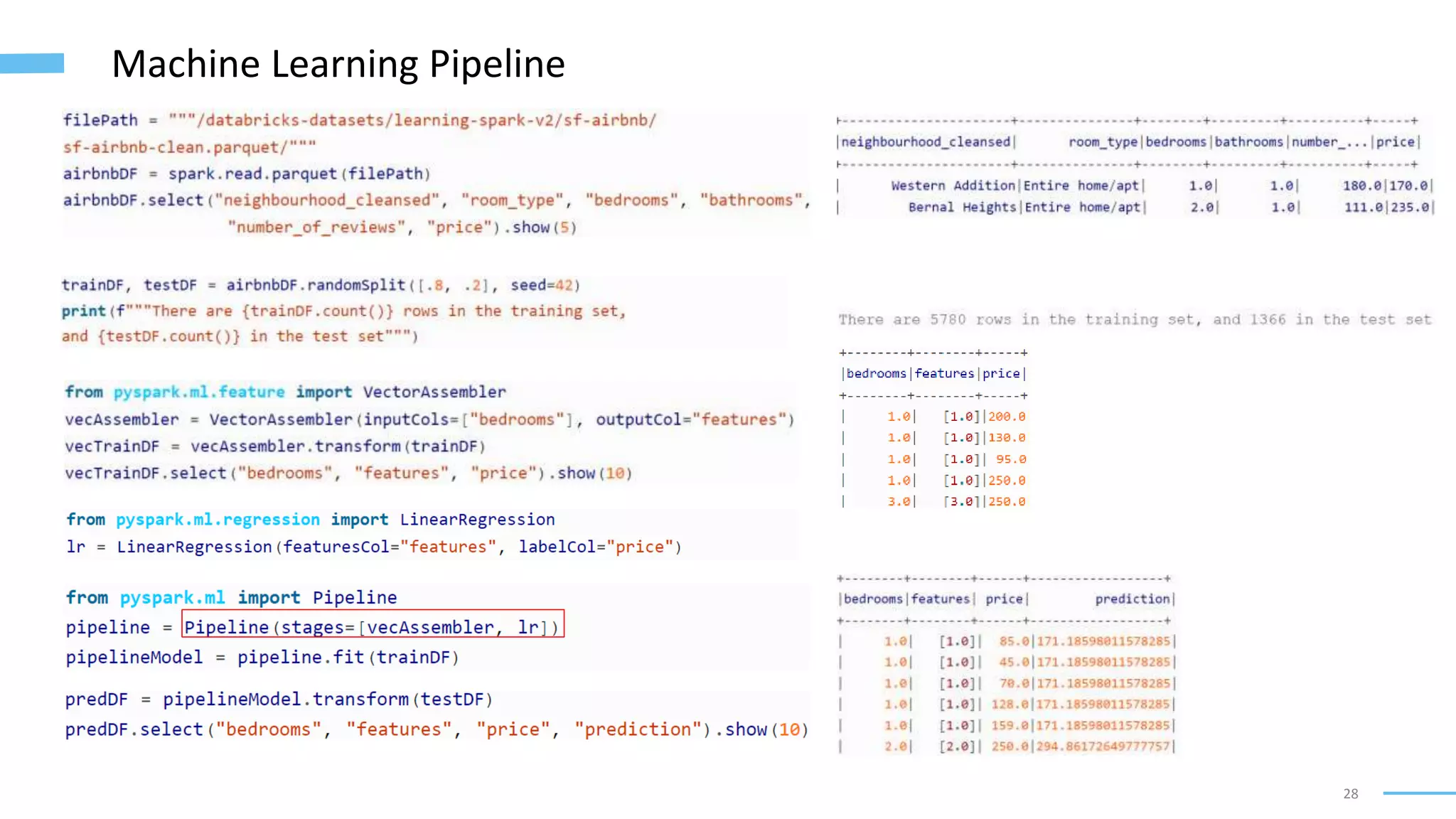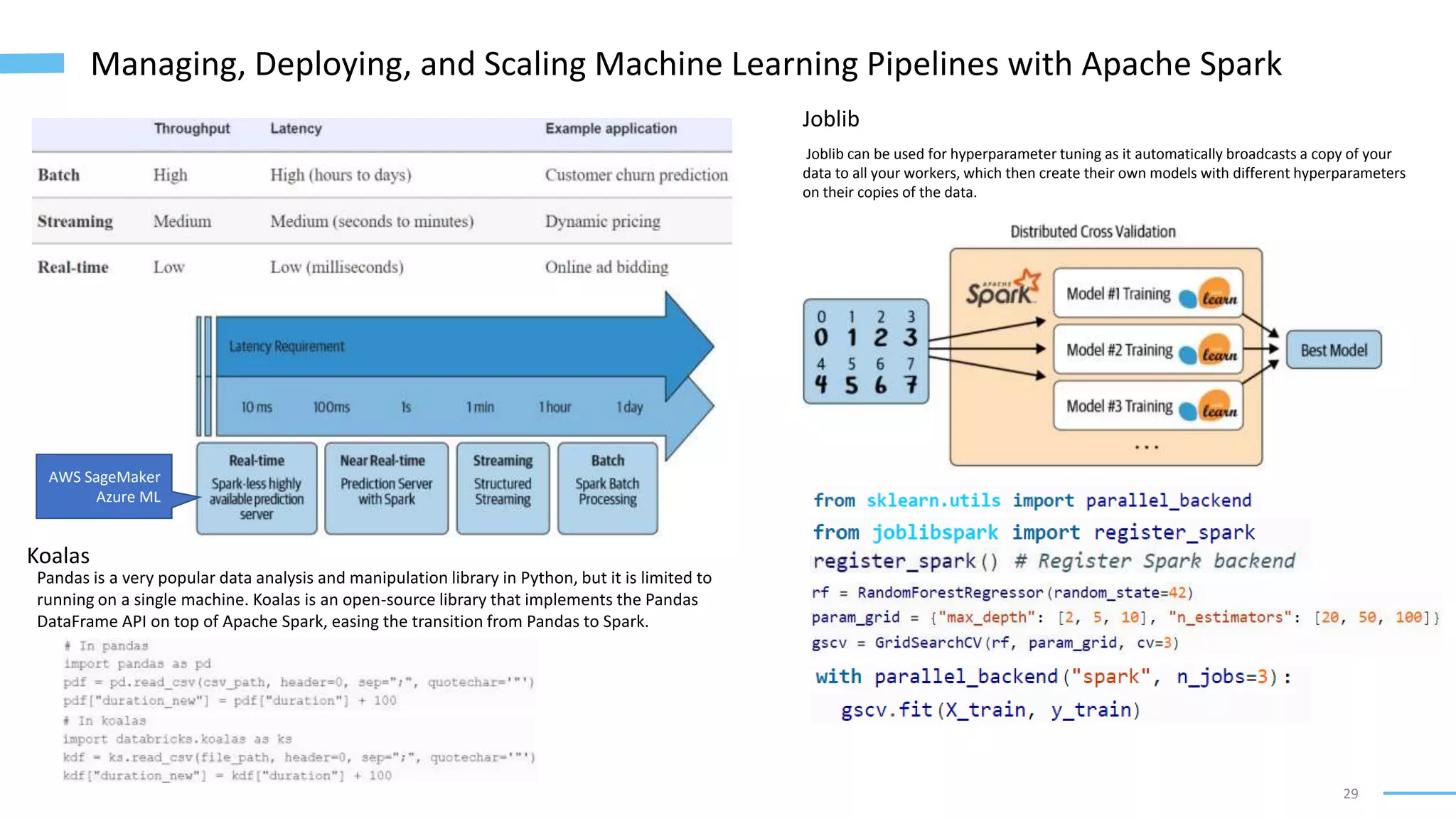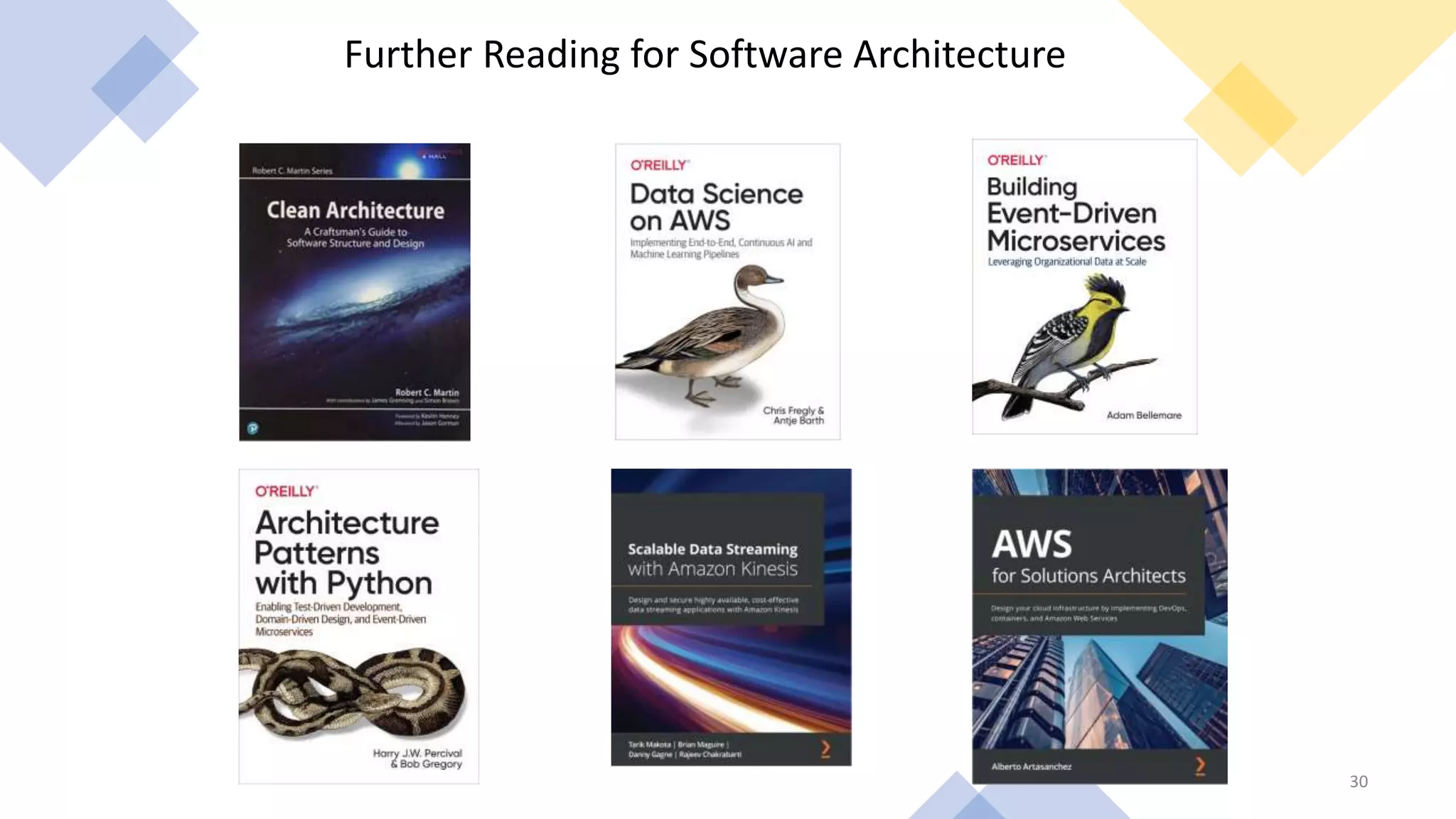The document provides an overview of software architecture considerations for data applications. It discusses sample data system components like Memcached, Redis, Elasticsearch, and Solr. It covers topics such as service level objectives, data models, query languages, graph models, data warehousing, machine learning pipelines, and distributed systems. Specific frameworks and technologies mentioned include Spark, Kafka, Neo4j, PostgreSQL, and ZooKeeper. The document aims to help understand architectural tradeoffs and guide the design of scalable, performant, and robust data systems.
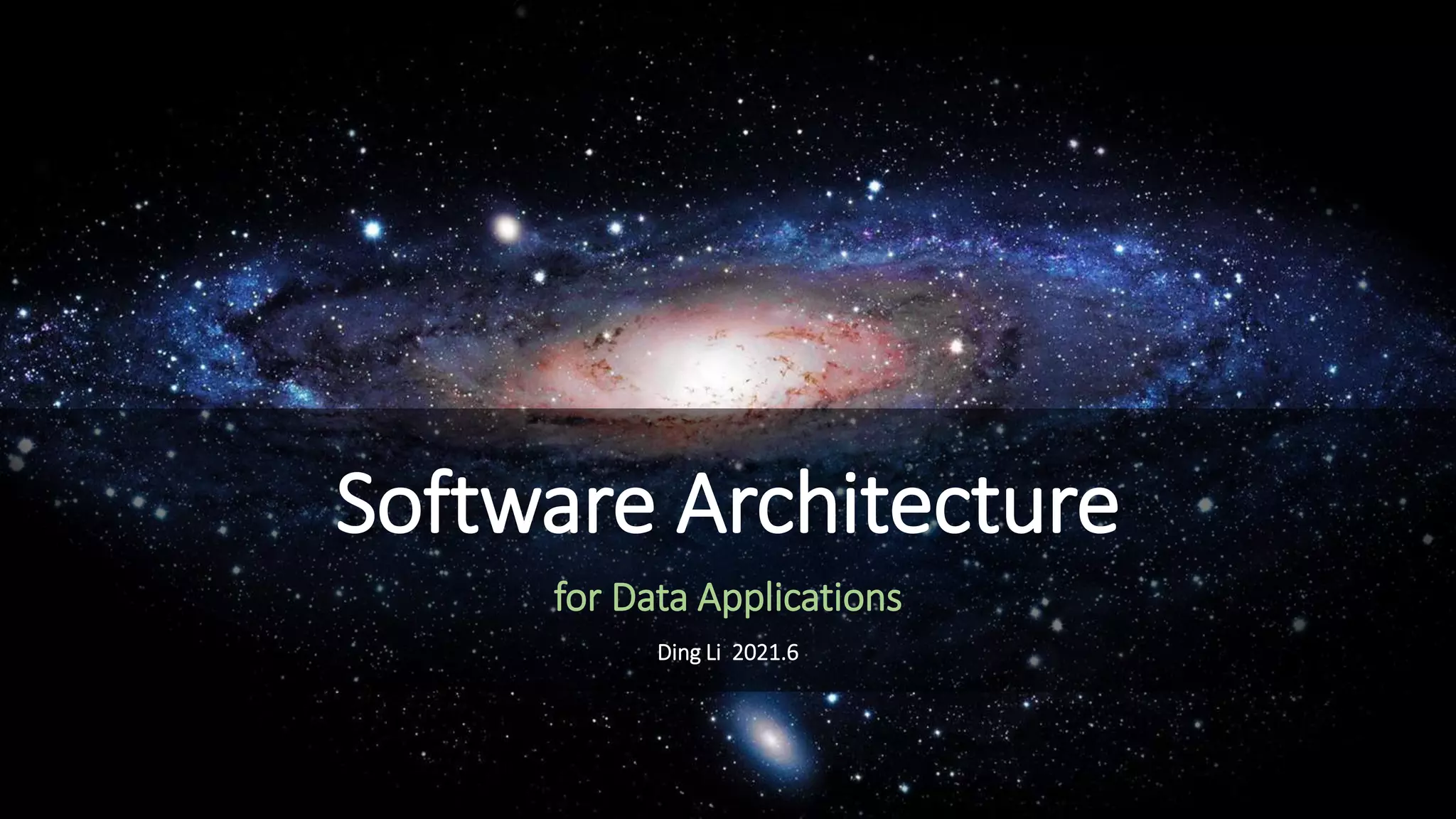
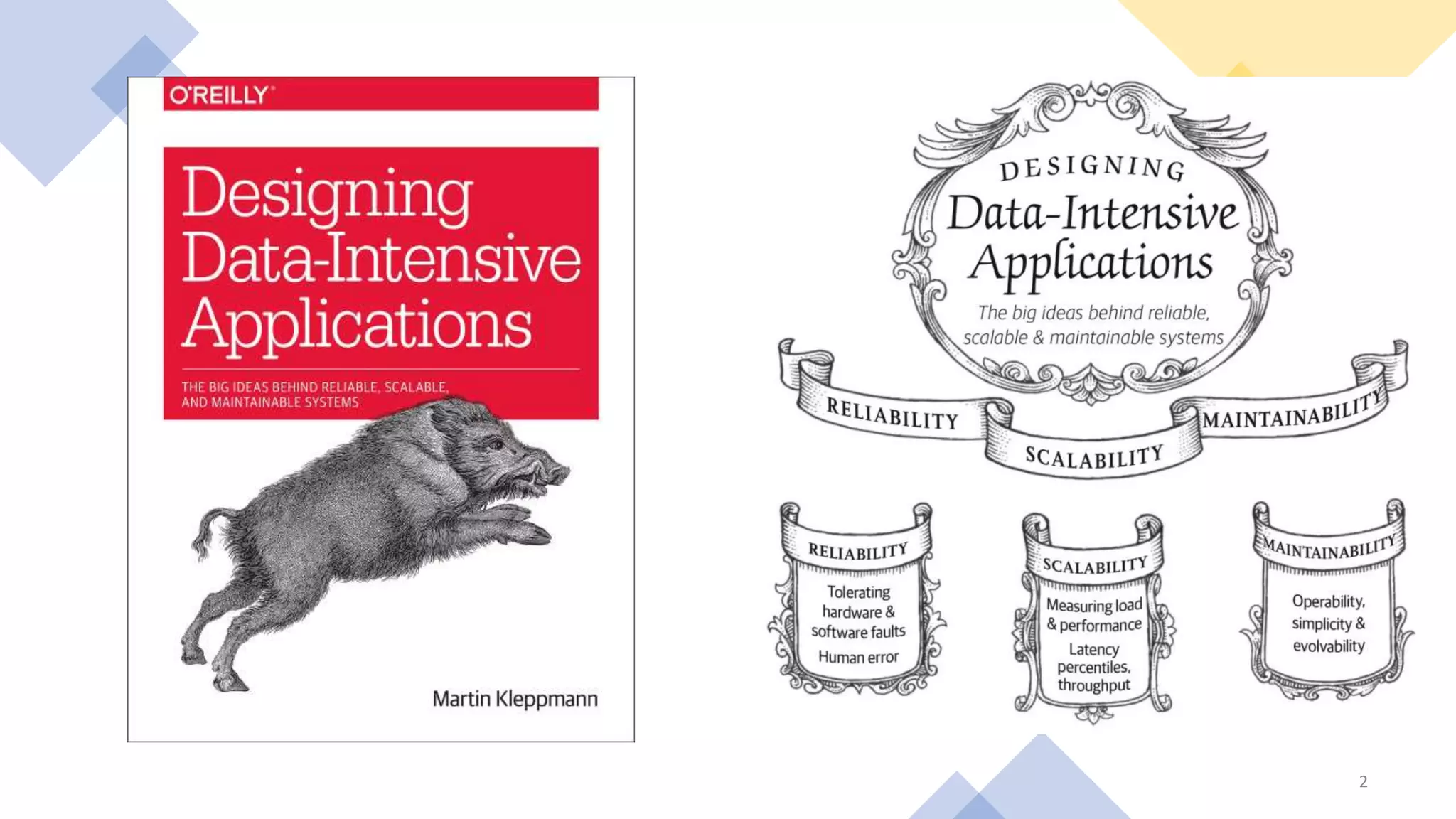
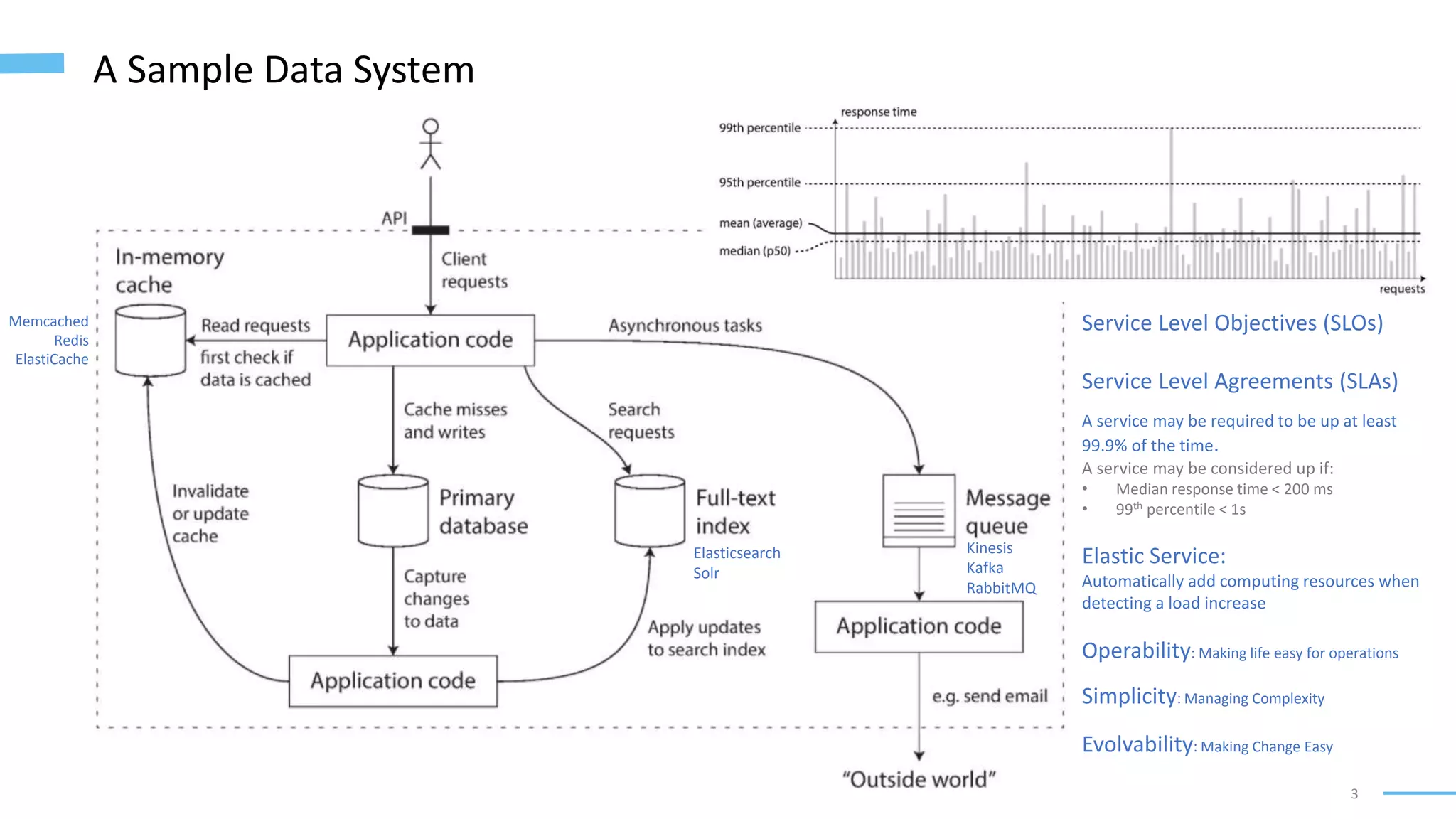
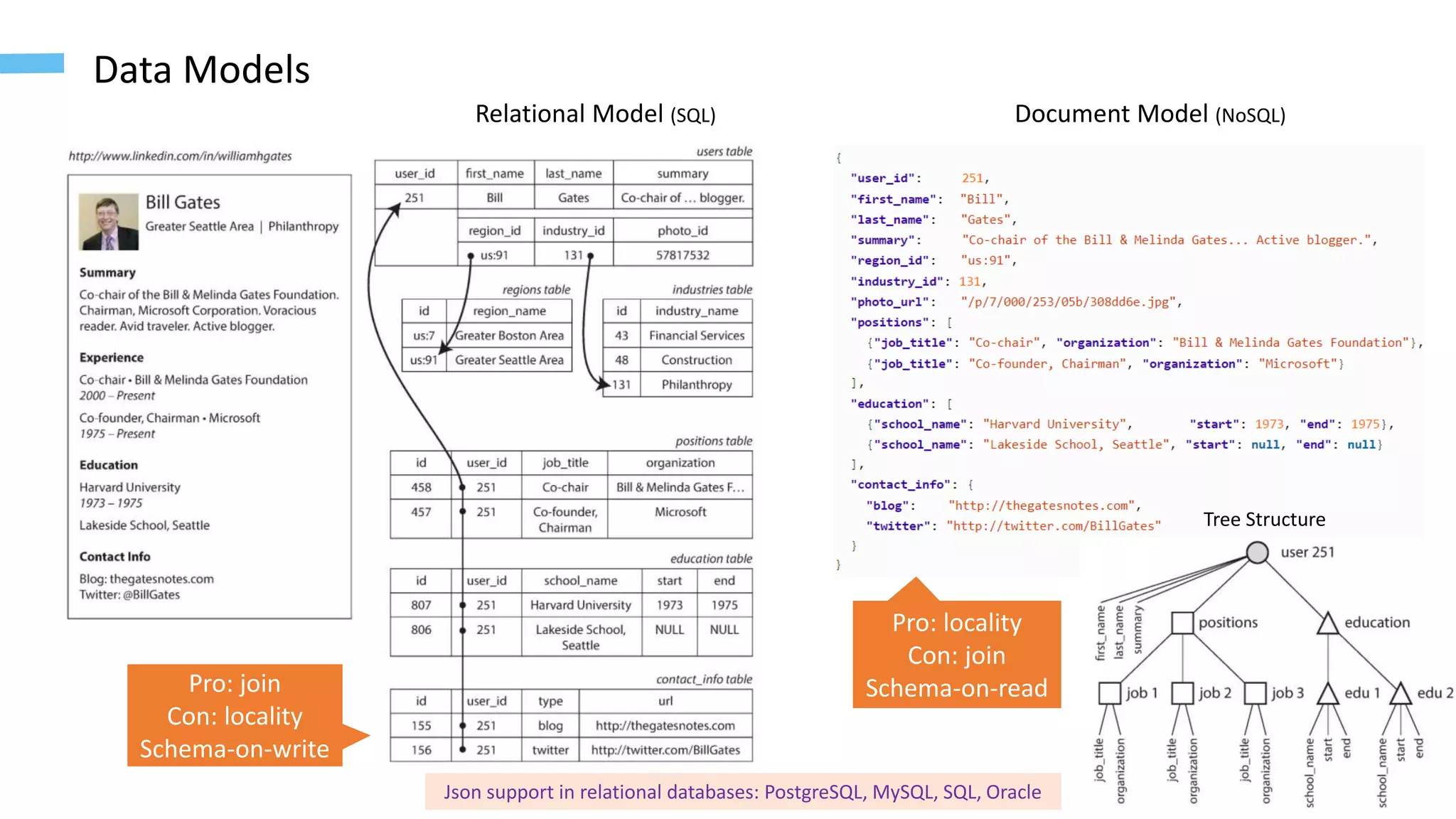
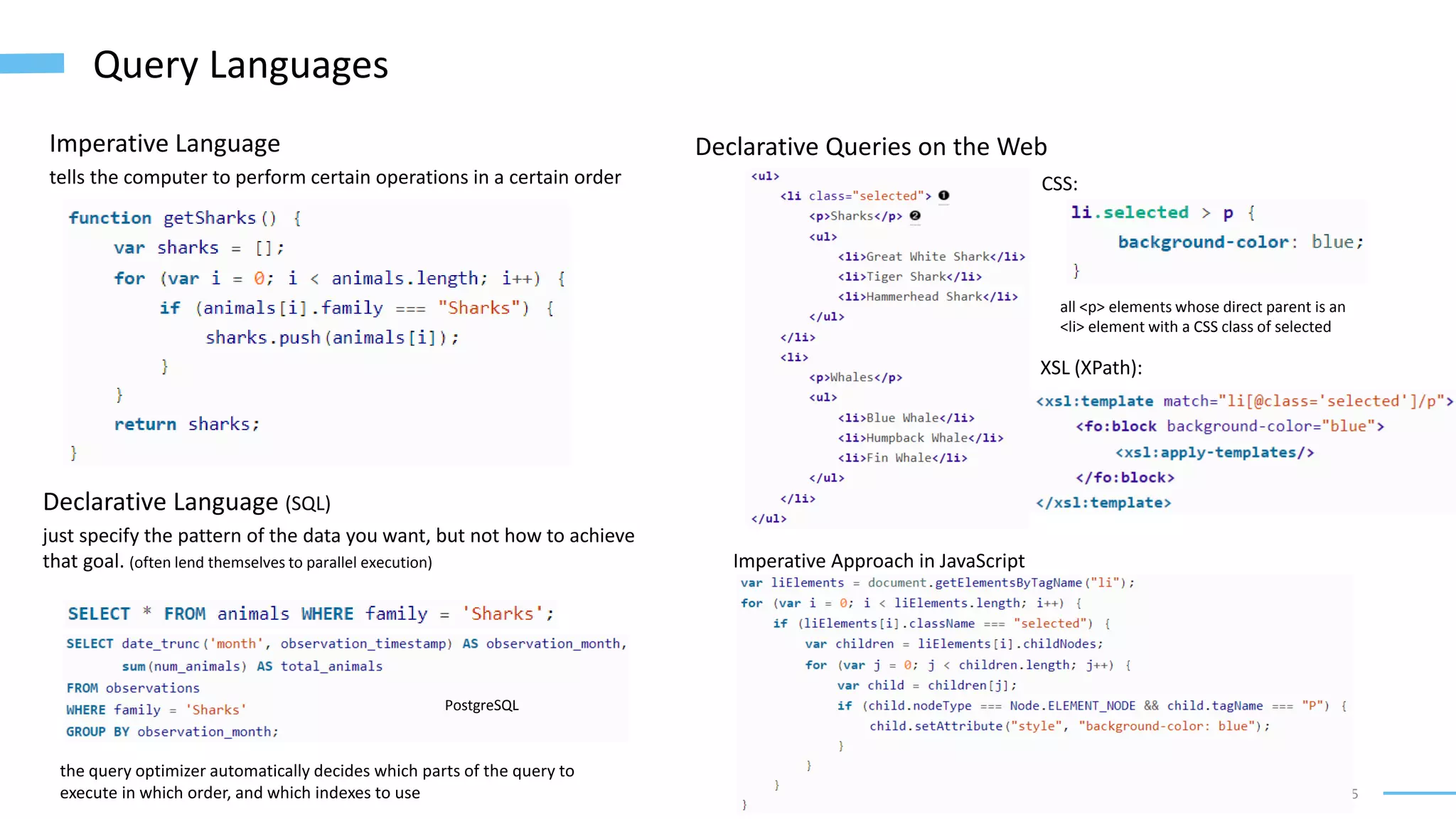
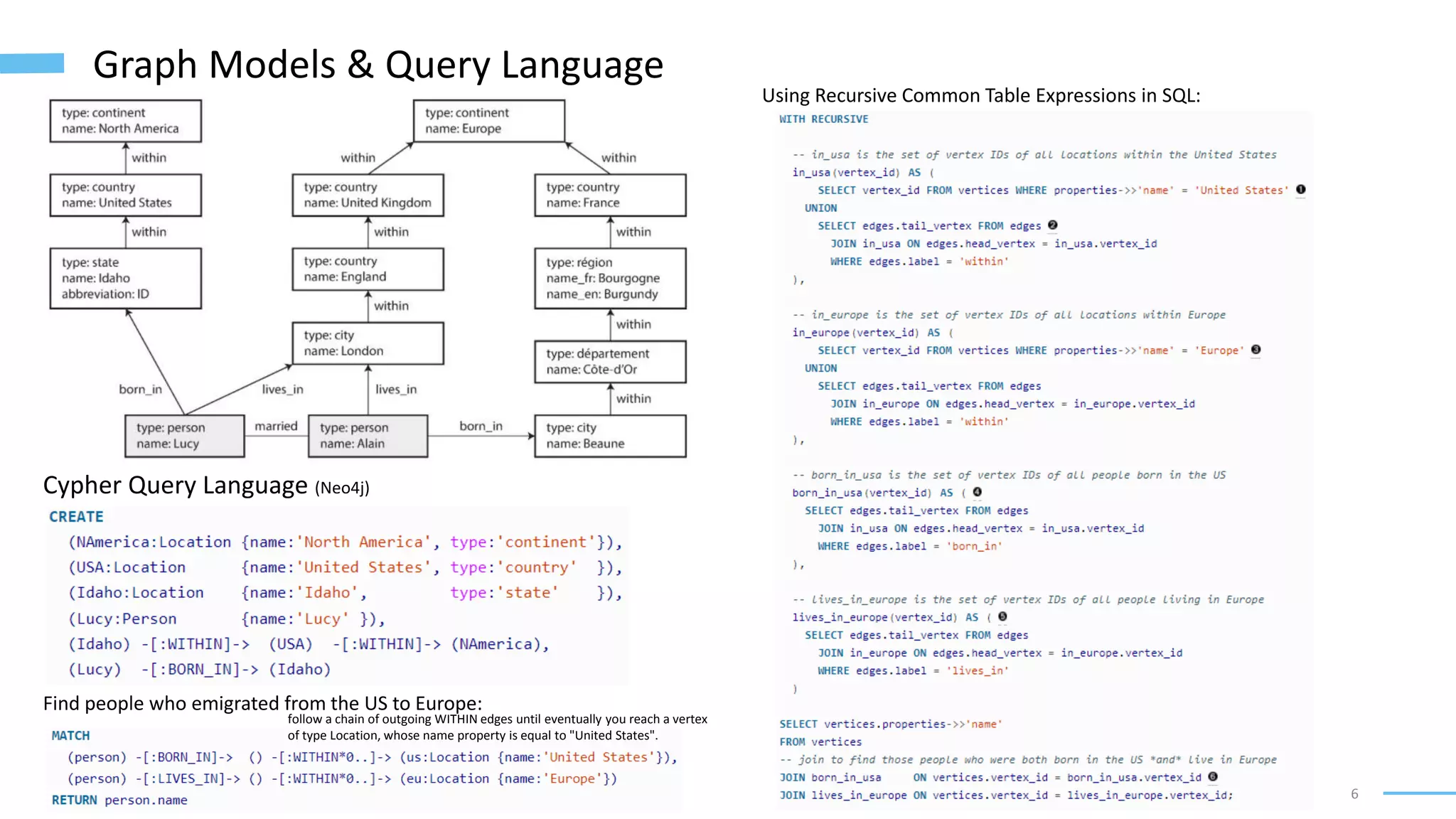
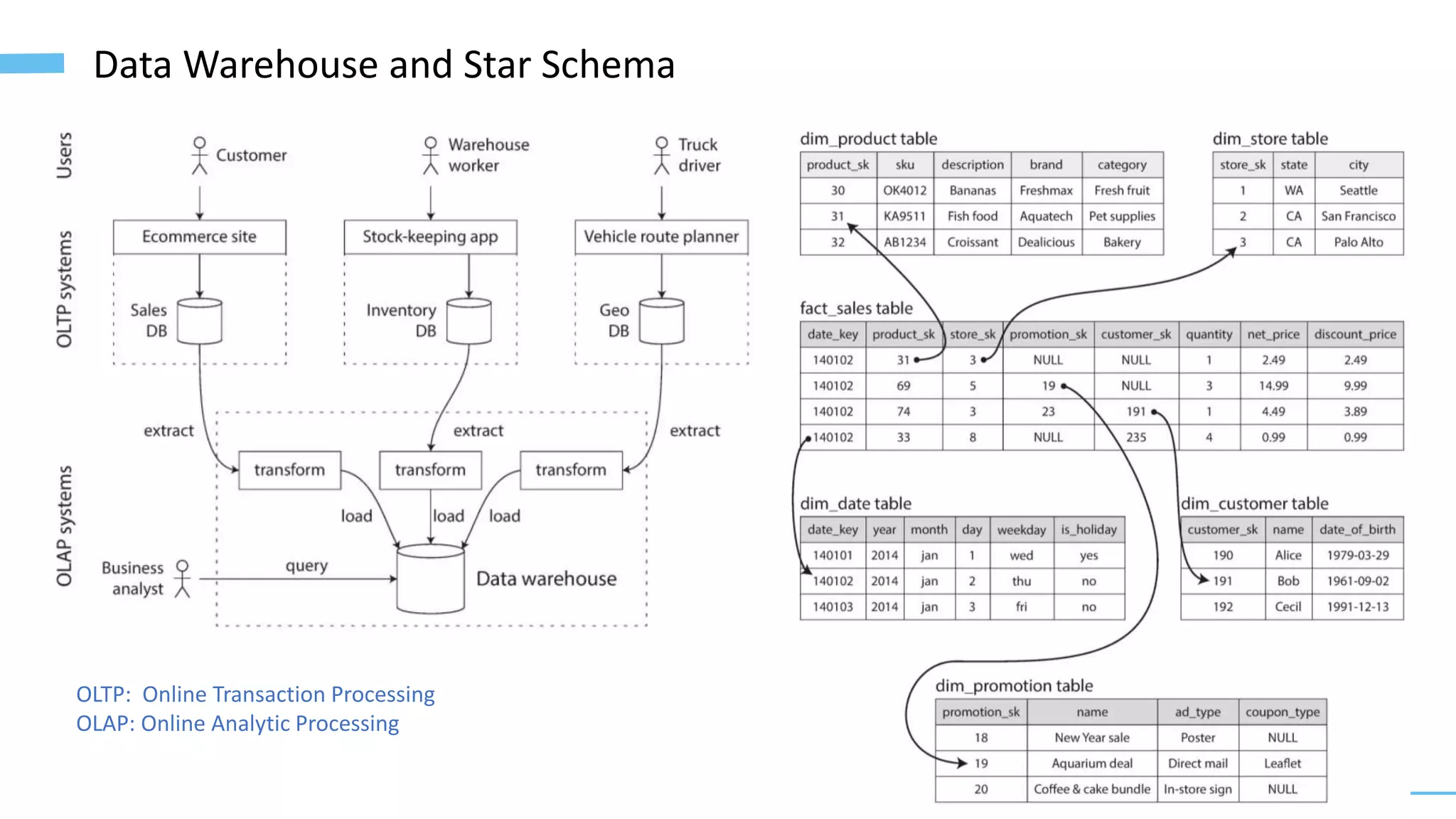
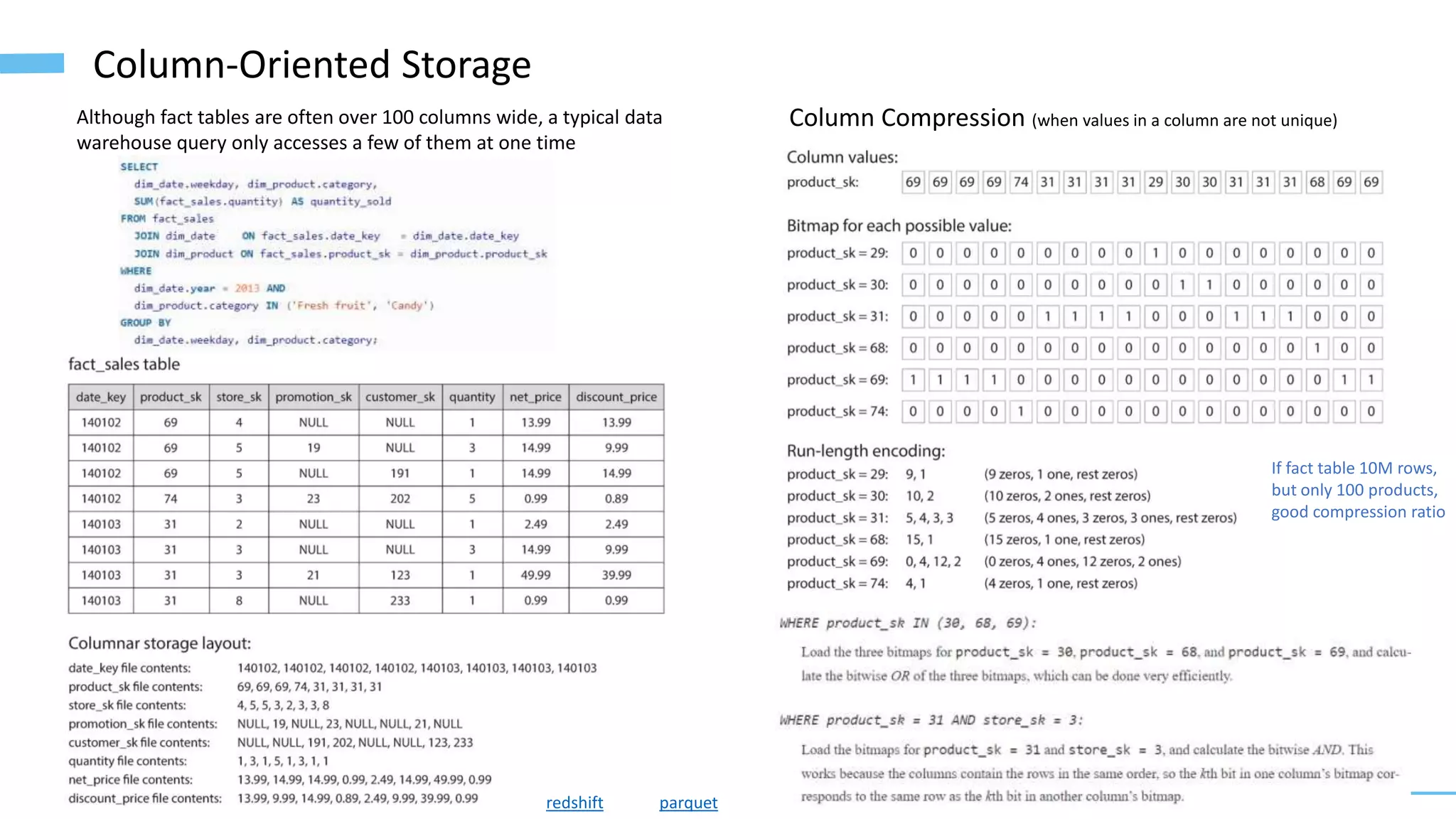
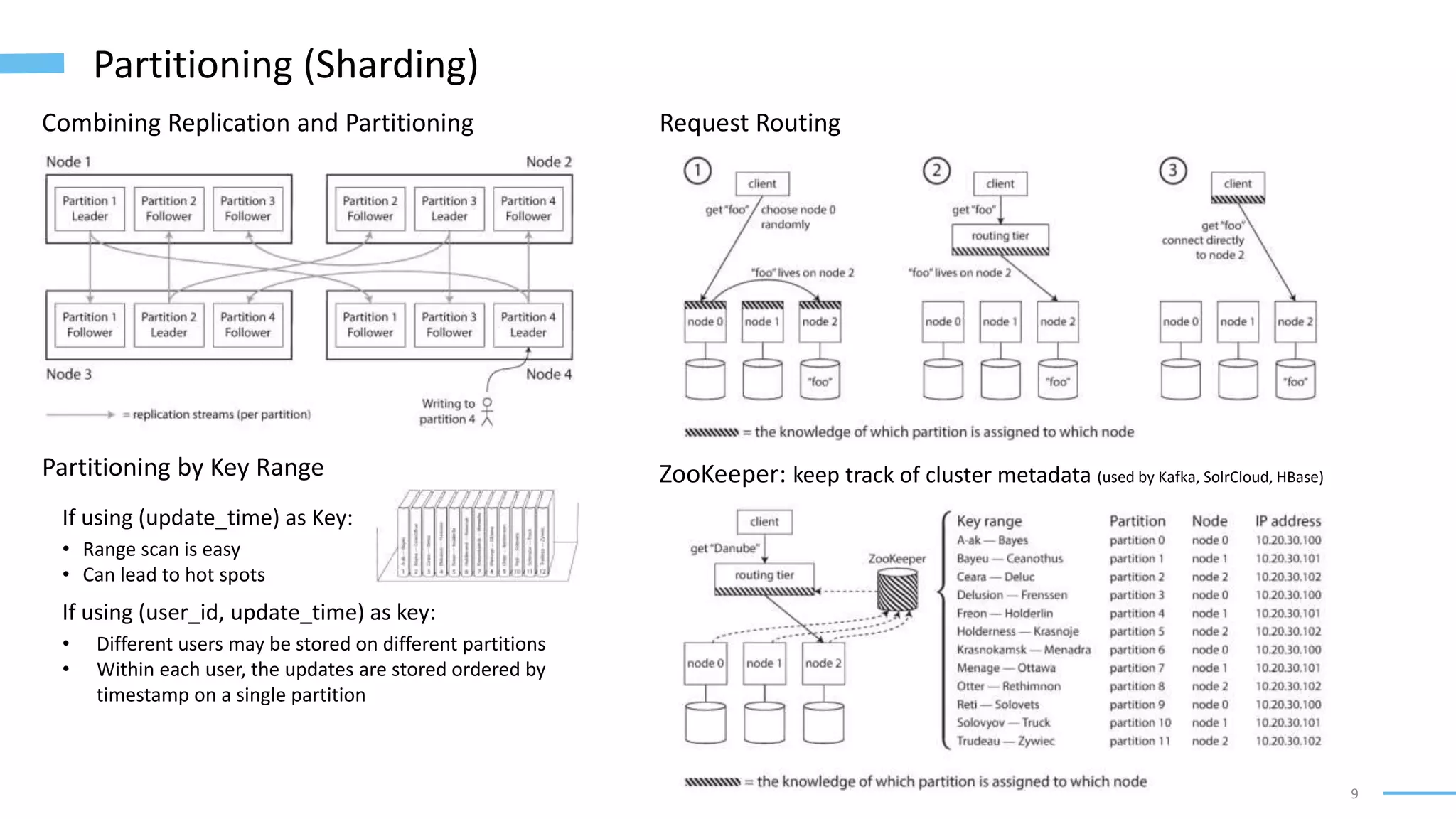
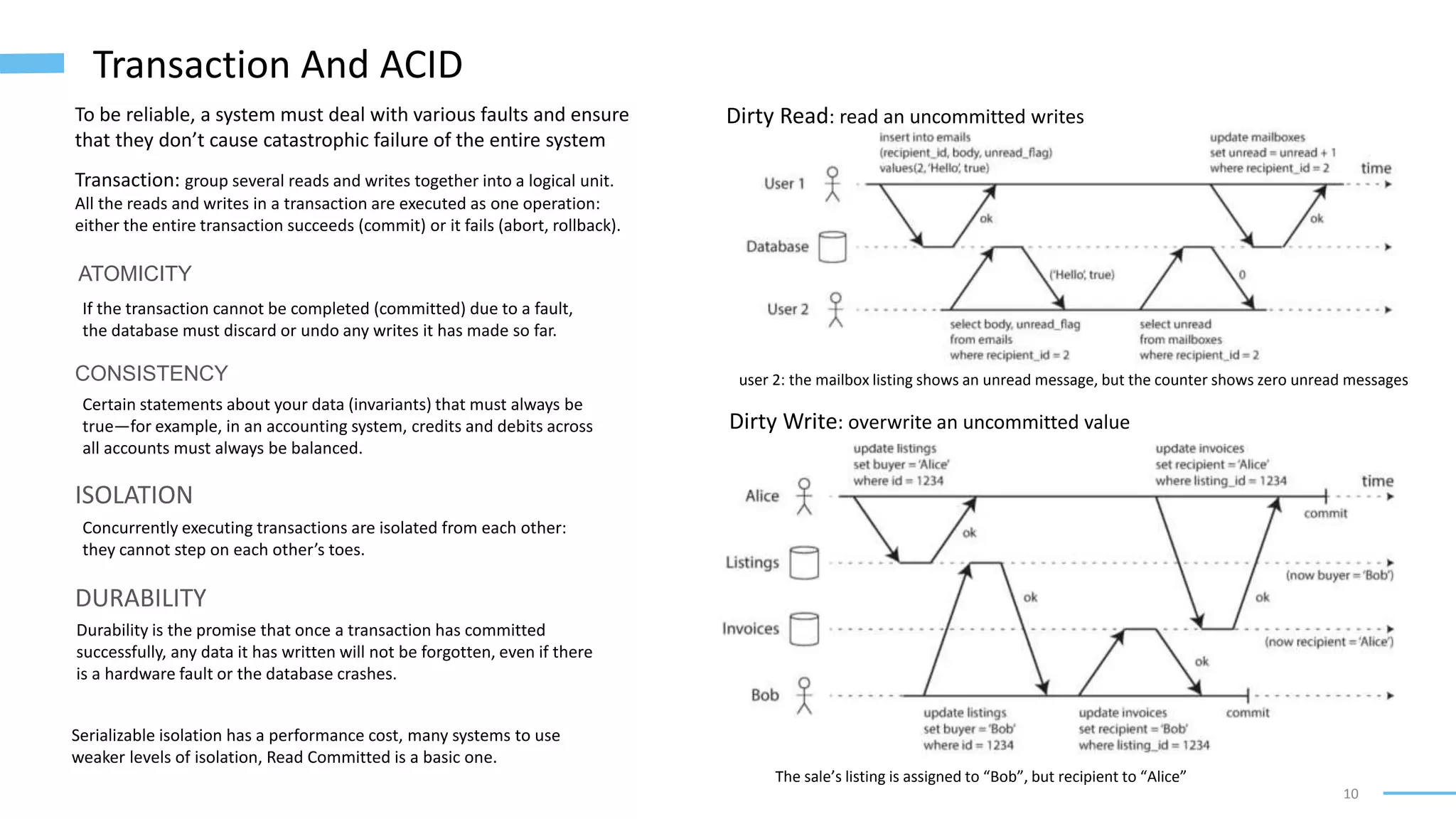
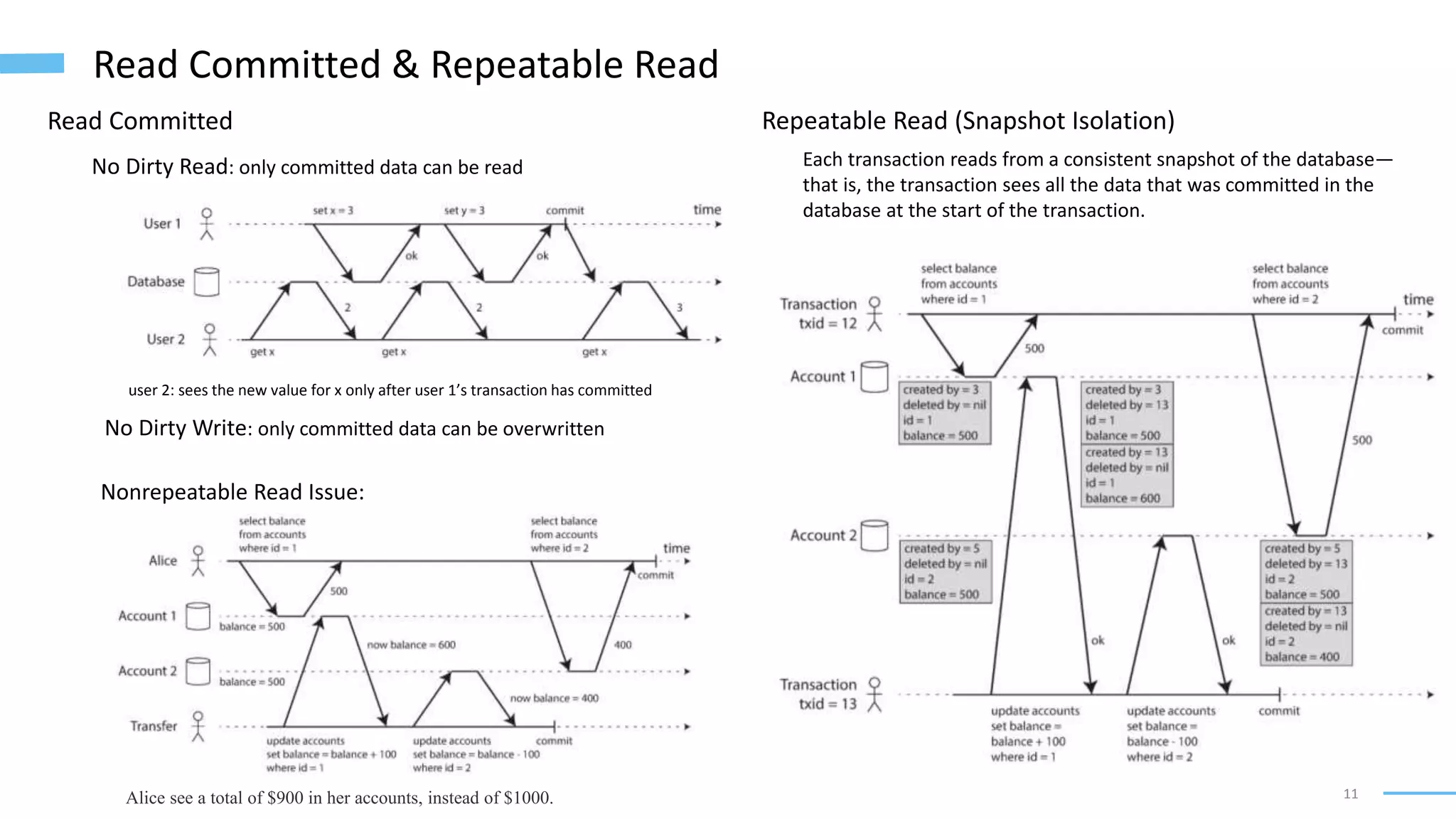
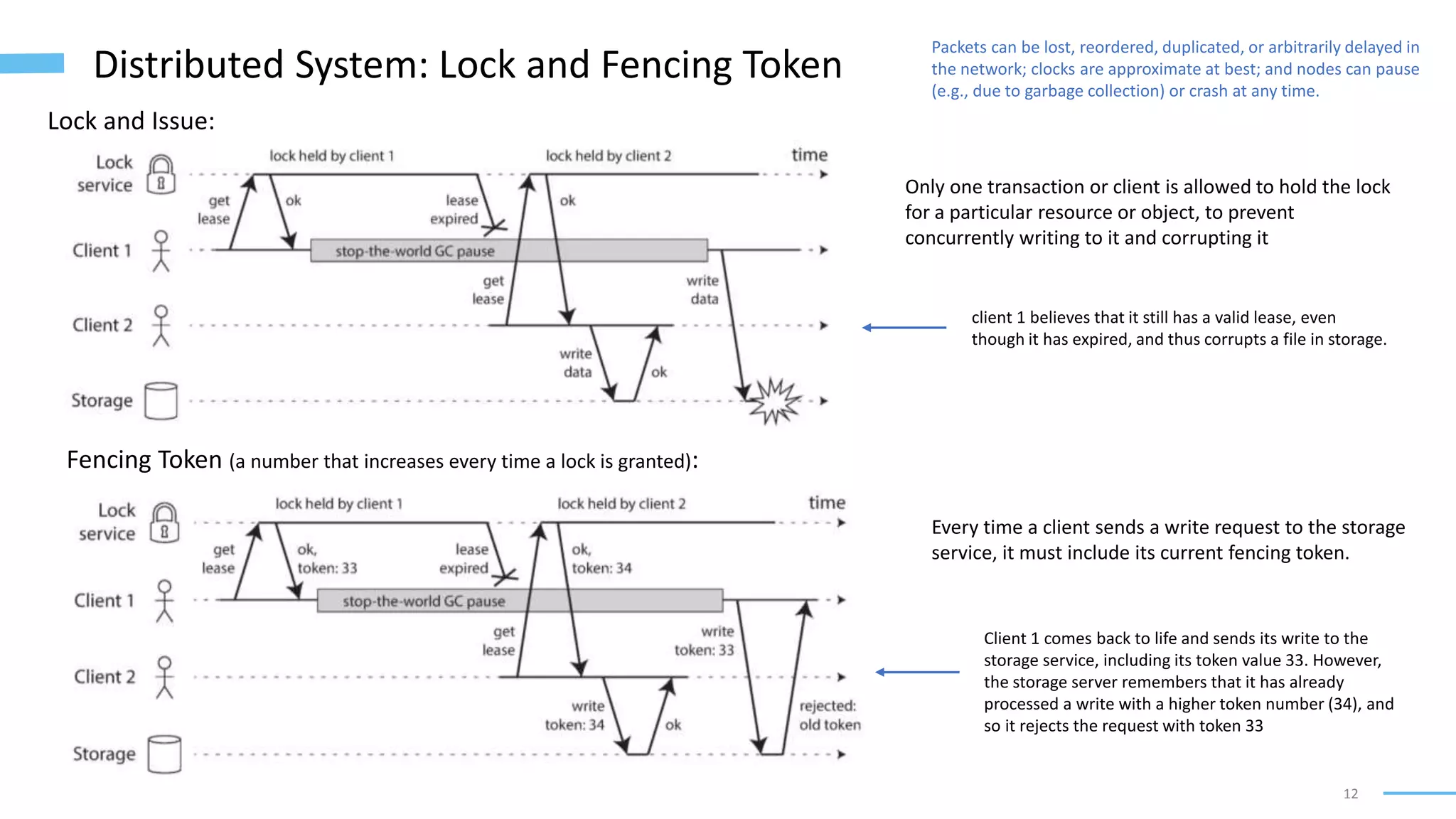
![13 Batch Processing with Unix Tools, MapReduce, and Spark • Services [HTTP/REST-based APIs] (online systems) • Batch Processing Systems (offline systems) • Stream Processing Systems (near-real-time systems) Batch Processing Web Logs with Unix Tools Output: MapReduce and Distributed Filesystems • Read a set of input files and break it up into records. • Call the mapper function to extract a key and value from each input record. awk '{print $7}': it extracts the URL ($7) as the key and leaves the value empty. • Sort all the key-value pairs by key. This is done by the first sort command. • Call the reducer function to iterate over the sorted key-value pairs. uniq -c, which counts the number of adjacent records with the same key. Read log file Split each line, get http ($7 token) Alphabetically sort by URL Counts of distinct URL Sort by number in reverse Output the first 5 lines Downsides of MapReduce • A MapReduce job can only start when all tasks in the preceding jobs (that generate its inputs) have completed • Mappers are often redundant: they just read back the same file that was just written by a reducer and prepare it for the next stage of partitioning and sorting. • Storing intermediate state in a distributed filesystem means those files are replicated across several nodes, which is often overkill for such temporary data. Solution: Dataflow Engines (such as Spark) • Explicitly model the flow of data through several processing stages • Parallelize work by partitioning inputs, and they copy the output of one function over the network to become the input to another function • All joins and data dependencies in a workflow are explicitly declared, the scheduler has an overview of what data is required where, so it can make locality optimizations](https://image.slidesharecdn.com/softwarearchitecturefordataapplications-220212133506/75/Software-architecture-for-data-applications-13-2048.jpg)
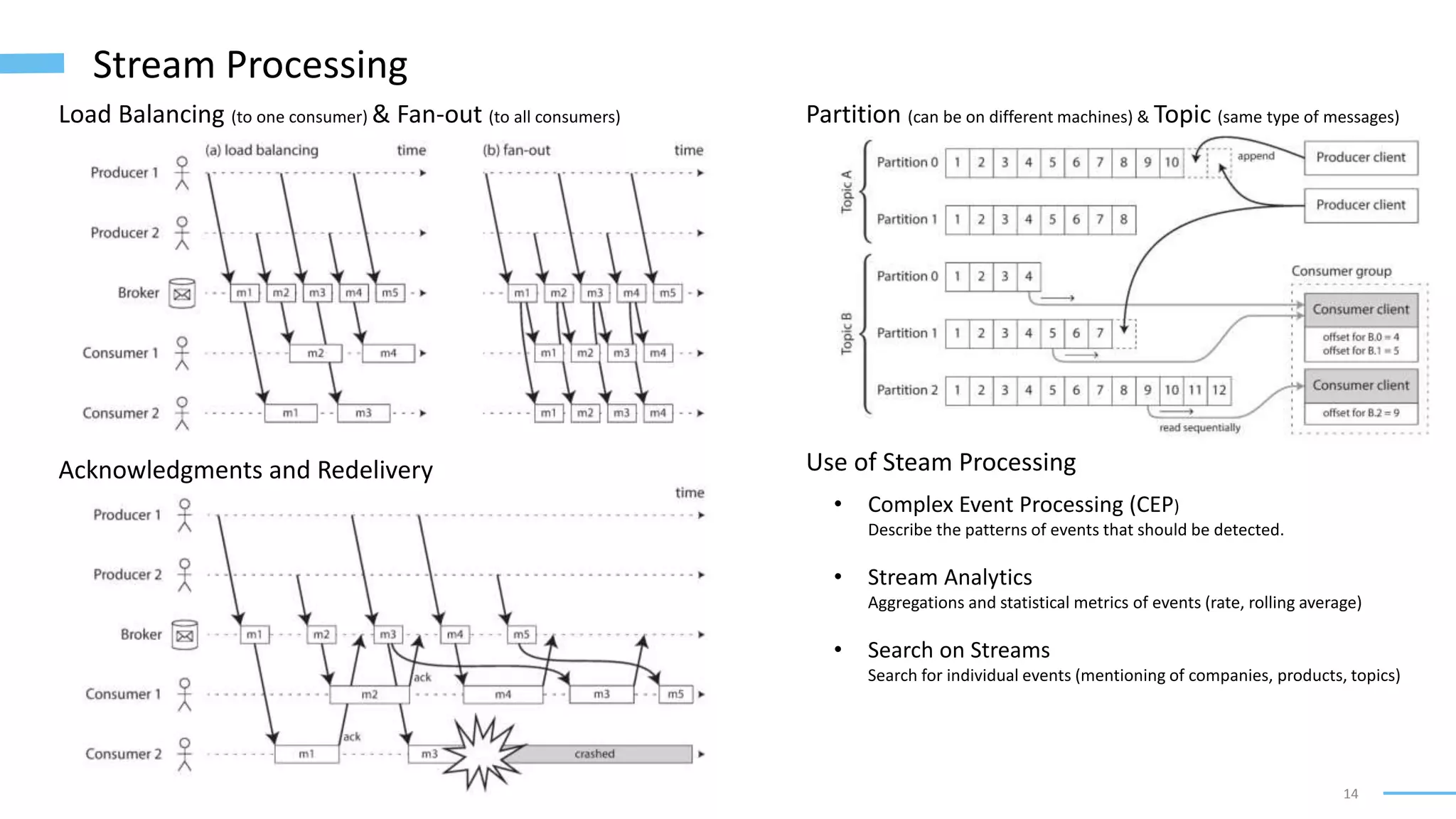
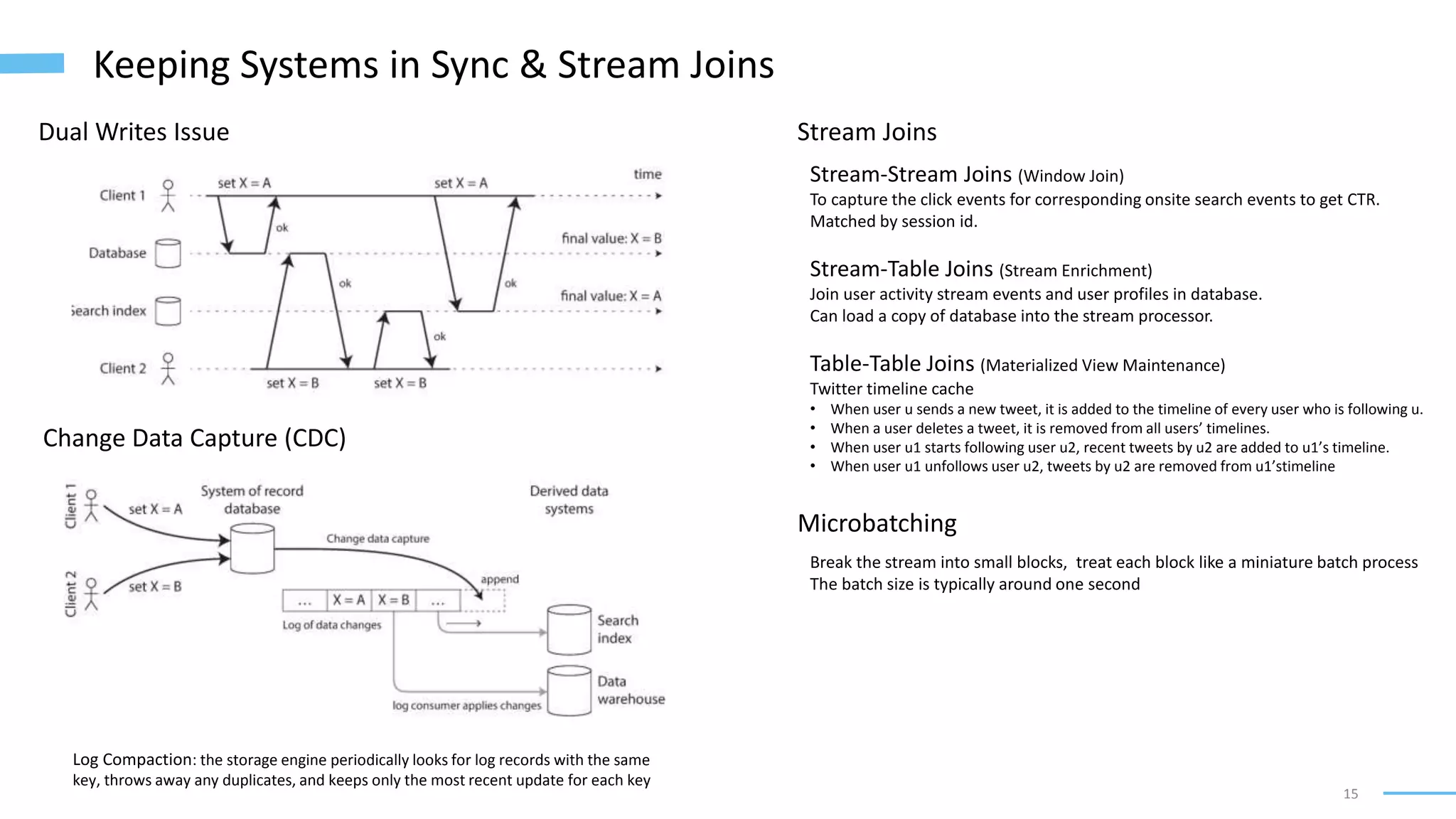
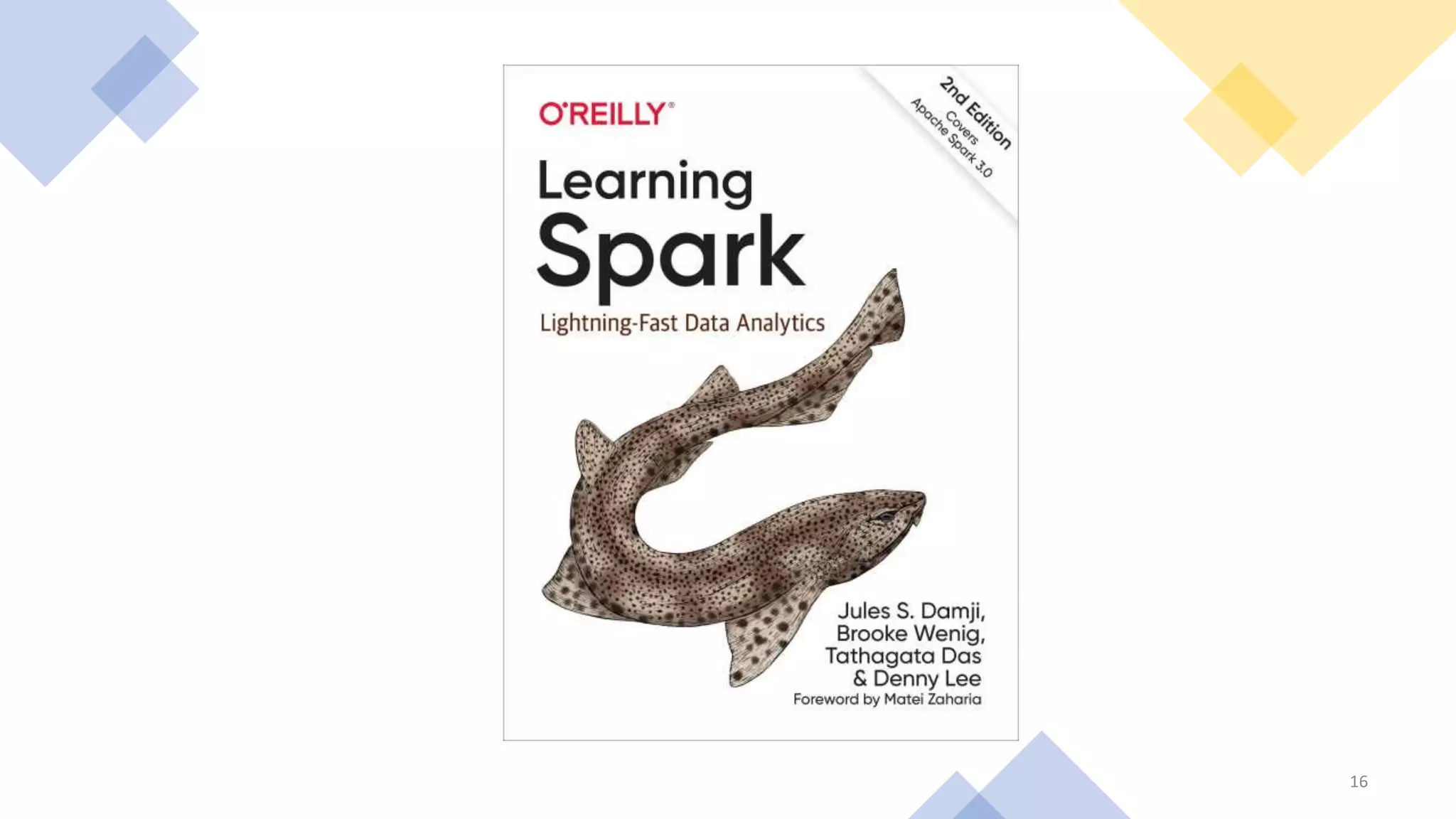
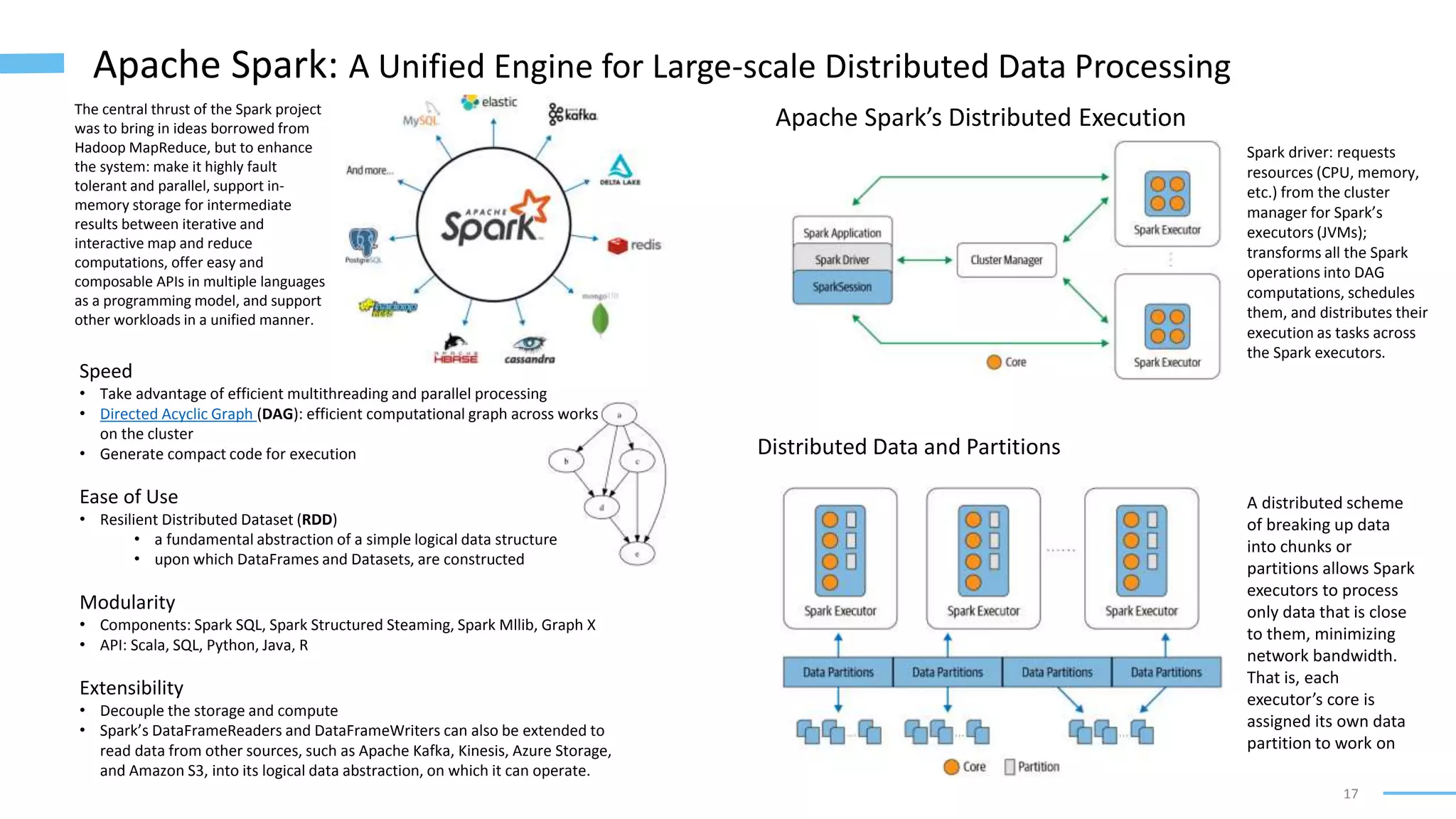
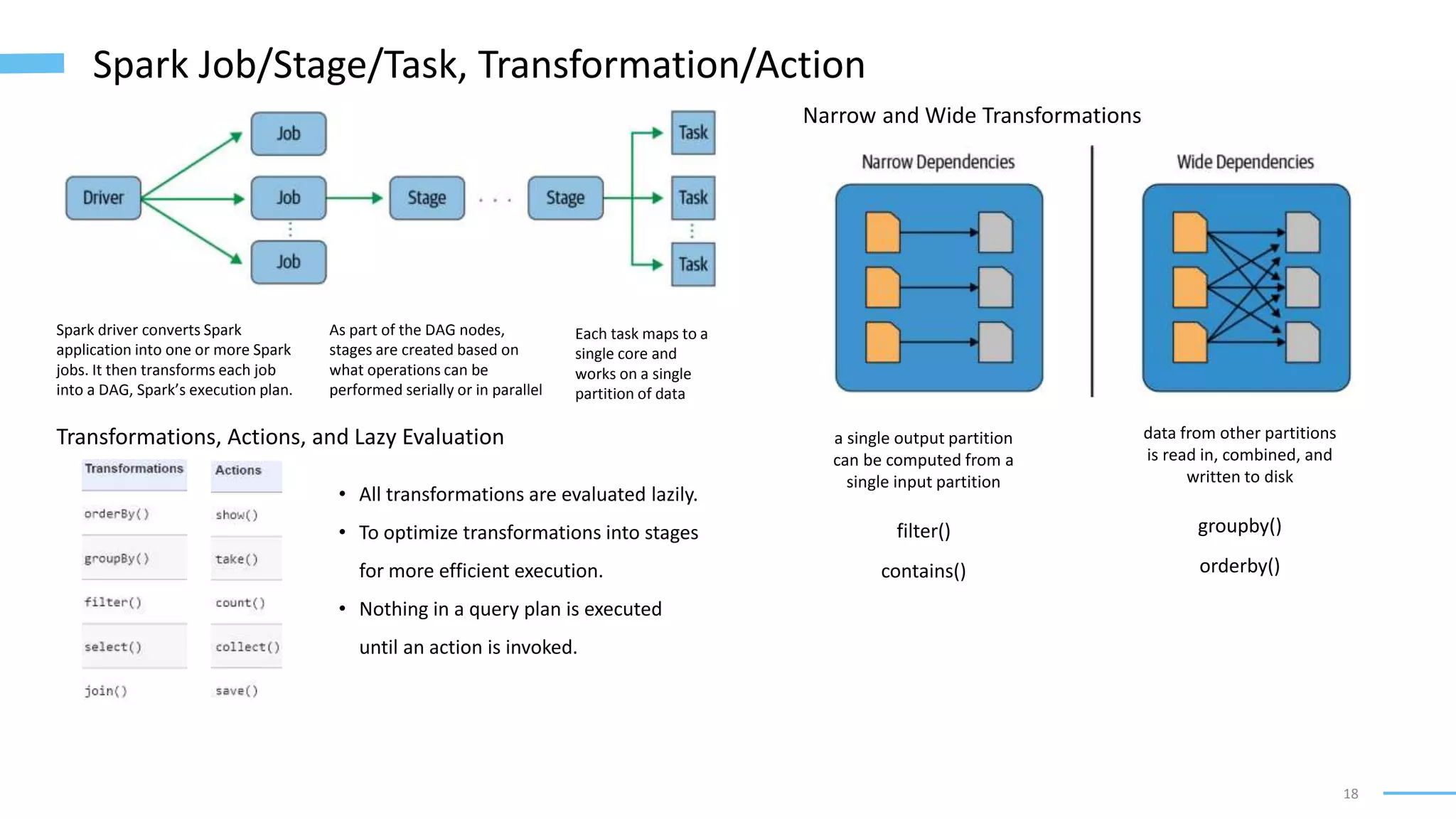
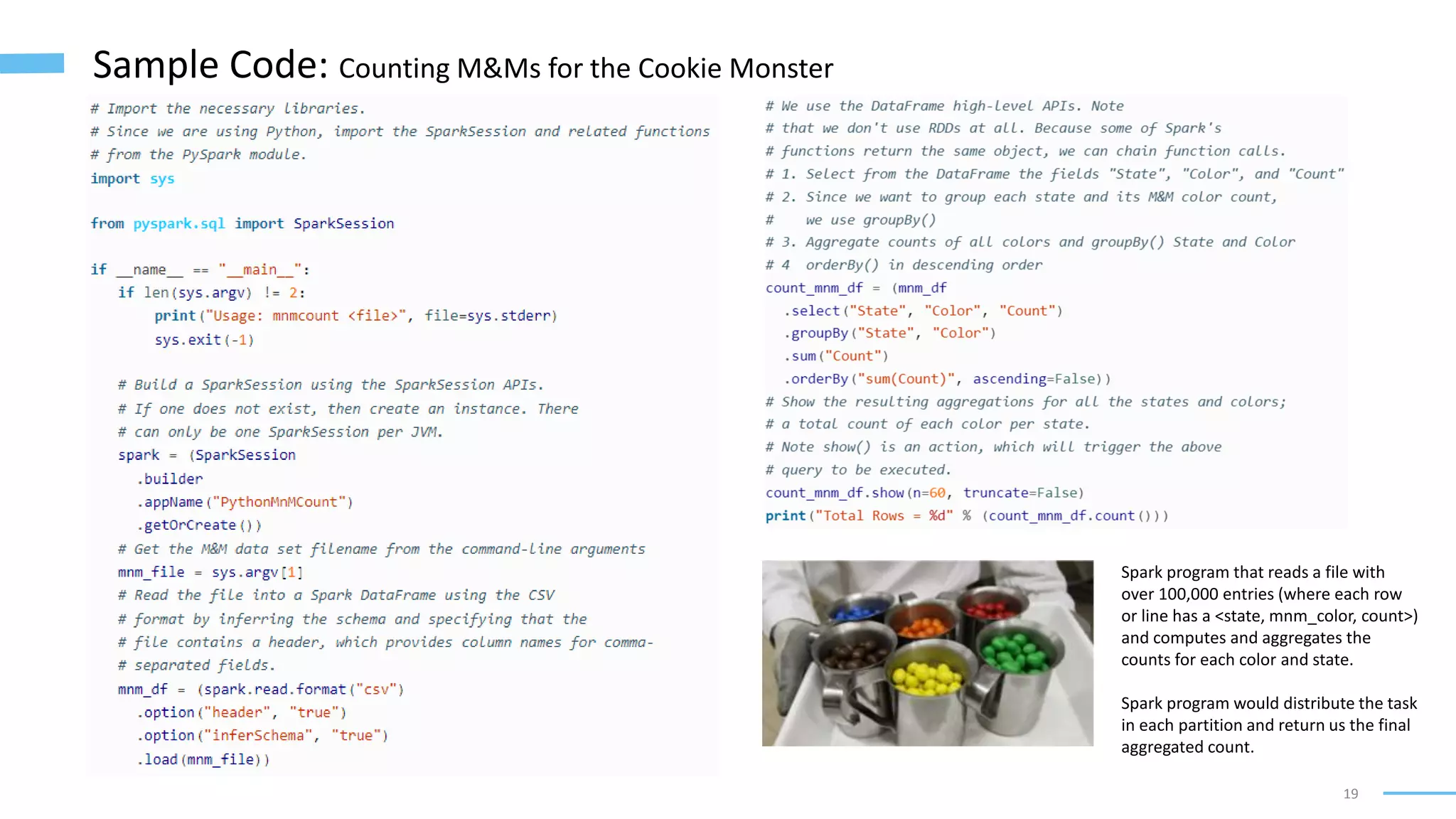
![20 Apache Spark’s Structured APIs The RDD is the most basic abstraction in Spark • Dependencies instructs Spark how an RDD is constructed with its inputs • Partitions (with some locality information) ability to parallelize computation on partitions across executors • Compute function: Partition => Iterator[T] produces an Iterator[T] for the data that will be stored in the RDD Basic Python data types in Spark Python structured data types in Spark Schemas and Creating DataFrames A schema defines the column names and associated data types for a DataFrame. schema = "author STRING, title STRING, pages INT“ blogs_df = spark.createDataFrame(data, schema)](https://image.slidesharecdn.com/softwarearchitecturefordataapplications-220212133506/75/Software-architecture-for-data-applications-20-2048.jpg)
